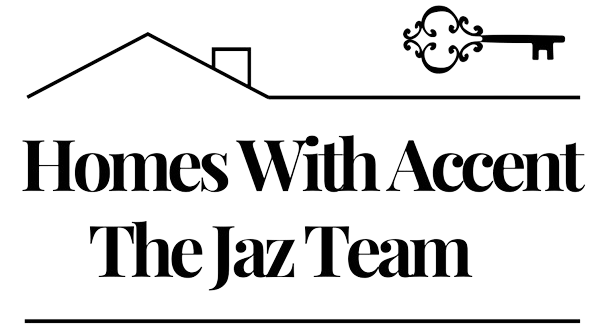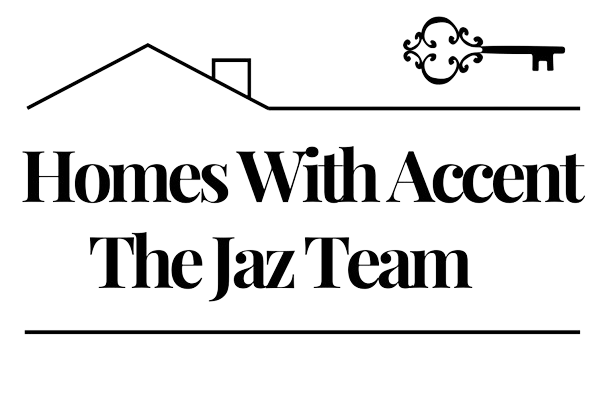Pleasant Hill real estate sits snug in the East Bay foothills, a short drive from downtown Walnut Creek and within easy reach of San Francisco and Oakland. The city feels like a compact suburban center with a walkable downtown, patches of green space, and a BART station that makes the Bay Area more reachable. This article walks through location, housing, costs, utilities, schools, transit, jobs, and daily life so you have a clear picture before you move to Pleasant Hill.
Where is Pleasant Hill Located?
Pleasant Hill sits in central Contra Costa County, roughly 20 miles east of San Francisco and adjacent to Walnut Creek and Concord. It occupies a convenient spot along I-680, with the Pleasant Hill / Contra Costa Centre BART station linking the city to regional job centers and the rest of the Bay Area.
The city’s footprint is suburban and compact, bordered by tree-lined residential streets and pockets of commercial corridors along Contra Costa Boulevard and Taylor Boulevard. That geography places Pleasant Hill squarely in the East Bay commute belt, with quick access to Highway 680 and to nearby employment clusters in Walnut Creek and Concord.
What is the Pleasant Hill Real Estate Market Like?
Pleasant Hill’s market is varied in 2025. Median sale prices for the city were about $920,000 in September 2025, reflecting a slight year-over-year cooling of roughly 2.6 percent; market speed has slowed compared with the heated pandemic years and time-to-contract is longer. Those city-level headline numbers mask differences by product type and neighborhood.
Single-family houses on their own lots usually close for more money than nearby condos or townhomes. In neighborhoods with bigger yards, sale prices can even top what you’ll see near downtown. Put simply, Pleasant Hill is a mixed bag: move-in-ready houses in good locations still draw strong offers, while many condos and downtown units sit on the market longer and tend to see more price cuts.
What Are The Best Neighborhoods In Pleasant Hill?
Each Pleasant Hill neighborhood has its own feel and mix of homes. Gregory Gardens, with its shady streets, shows off mid-century ranch houses and mature yards, giving the area a calm, settled vibe. Closer to the BART station and Downtown, housing grows denser; condos and apartments cluster near shops and cafés, a draw for commuters who want to leave the car behind. Farther out, near Olympic Boulevard and the Diablo foothills, you’ll find larger lots and the occasional new infill build. That variety creates a wide spread of listing prices across town.
What Are The Most Popular House Types in Pleasant Hill?
The city’s inventory mixes single-family detached homes, smaller-lot contemporary and ranch houses, plus a steady supply of condos and townhomes near the core and transit corridors. Older ranch and midcentury styles remain common on tree-lined streets, while new construction and remodels have refreshed some neighborhoods with contemporary layouts. Buyers tend to segment by lot size, proximity to downtown or BART, and school attendance zones.
What is the Cost of Living in Pleasant Hill?
Pleasant Hill’s cost of living sits above the national average but is broadly comparable with nearby Walnut Creek and other established East Bay suburbs. Rent and housing are the largest drivers of higher costs. As of mid-2025, average apartment rent figures for Pleasant Hill neighborhoods were roughly in the low-to-mid $2,000s per month, with downtown averages a bit higher depending on unit size and finishes.
Other everyday expenses such as groceries, utilities, and transportation tend to align with Bay Area norms and are higher than the U.S. median. If you are comparing options, Walnut Creek and Concord are the closest peers for cost-of-living analysis; Walnut Creek typically posts similar or slightly higher retail and dining prices, while Concord can be a bit more affordable on average.
What are the Utilities in Pleasant Hill?
Electricity and natural gas service in Pleasant Hill are provided primarily by Pacific Gas and Electric Company, which covers most of the East Bay. Water service depends on where you live; most residents receive water from the Contra Costa Water District, while parts of the southwest are served by East Bay Municipal Utility District or the Martinez Water District. That split means new residents should check which district covers their specific address when setting up service.
Sewer service, trash pickup, and recycling are handled through the city and contracted haulers; the Pleasant Hill Recreation & Park District and the city both publish straightforward setup guides for new residents and seasonal schedules. If you move to Pleasant Hill, line up PG&E for power and the correct water district for water; call numbers are available on the city utilities pages.
Is Pleasant Hill a Safe Place to Live?
Public safety data through 2025 show mixed trends. The Pleasant Hill Police Department posts monthly crime statistics; September 2025 departmental snapshots report year-to-date calls for service and breakdowns by property and person crimes, with detailed monthly PDFs available for review. Overall the city publishes regular monthly snapshots that show property crime is the most common category while violent crimes have been numerically lower in many months.
Comparisons to neighboring cities vary by category and timeframe, so the most useful approach is to consult the police department’s monthly reports for up-to-date counts by type and neighborhood. Community safety resources include the city’s online reporting tools, neighborhood watch programs, and regular police bulletins that describe trends and local prevention steps.
What is the Weather Like in Pleasant Hill?
Pleasant Hill has a Mediterranean climate with warm, dry summers and mild, wetter winters. Average summer highs often sit in the mid-80s Fahrenheit, while winter daytime highs commonly reach the mid-to-upper 50s; most annual rainfall falls between November and March. The moderate maritime influence from the Pacific keeps coastal fog and marine moderation within reach but Pleasant Hill is generally sunnier and warmer than immediate coastal neighborhoods.
This pattern makes outdoor activities and year-round trails feasible, with a clear dry season for hiking and an active green season in winter and early spring.
How are the Schools in Pleasant Hill?
Pleasant Hill is served by the Mt. Diablo Unified School District, which includes neighborhood elementary schools, Valley View Middle School, and College Park High School for many local attendance zones. College Park High and other nearby schools receive mixed-but-generally-strong community ratings depending on the measure; third-party school profiles show College Park performing above average in several metrics. Use district and school pages for current enrollment and program details.
There are also private and parochial options in and near the city, plus Diablo Valley College’s Pleasant Hill campus for community college coursework and continuing education. School quality and program offerings vary by school and change year to year, so check the Mt. Diablo Unified pages and school report cards for up-to-date comparisons.
What are the Job Opportunities in Pleasant Hill?
Pleasant Hill hosts a mix of local employers and serves as a residential base for workers commuting to larger East Bay and Silicon Valley clusters. Nearby major regional employers include John Muir Health and Kaiser Permanente medical centers, the County government, and a host of professional and retail employers in Walnut Creek and Concord. Diablo Valley College is a major local educational employer and training hub. Contra Costa County’s largest-employer listings and state labor-market pages highlight healthcare, public sector, and education as steady sources of local jobs.
Many residents commute by BART, car, or bus to jobs across the Bay Area, so economic opportunity often depends on regional labor dynamics as much as on employers physically located inside Pleasant Hill.
What is Transportation Like in Pleasant Hill?
Transit access is a key advantage. The Pleasant Hill / Contra Costa Centre BART station links the city to Walnut Creek, Concord, and San Francisco, supporting an easy commute for many who work across the Bay Area. Highway access is strong via I-680, and local County Connection bus routes provide feeder service to BART and neighborhood corridors. The Iron Horse Regional Trail offers a continuous multiuse path for cyclists and walkers connecting Pleasant Hill into Walnut Creek and Concord.
Commuters should note occasional BART service adjustments for maintenance and upgrades; when these occur, local bus shuttles and alternate routing are commonly announced. For daily driving, factor in typical Bay Area peak-hour congestion on I-680 and the local arterials.
What is the Lifestyle Like in Pleasant Hill?
Pleasant Hill blends suburban ease and walkable downtown amenities. Downtown Pleasant Hill concentrates restaurants, cafes, and small shops along Contra Costa Boulevard and Crescent Drive, and the city schedules seasonal concerts, festivals, and recreation programs through its parks department. For outdoor time, Dinosaur Hill Park and Pleasant Hill Park provide short hikes, playgrounds, and green space that support a routine of neighborhood walks and weekend outings.
Pleasant Hill feels solidly suburban, built around a strong sense of community, yet spots near the BART station bring a touch of city life with easy walkability. Depending on where you stand, you might see calm, leafy lanes lined with single-family houses or, a few blocks over, a tighter weave of townhomes and condos edging toward downtown.
What are the Shopping and Dining Options in Pleasant Hill?
Downtown Pleasant Hill and the shopping center around Contra Costa Boulevard host a wide mix of options from casual cafes and local bakeries to family restaurants and national retailers. The downtown district and the shopping plaza jointly provide grocery, service, and dining choices for daily life, while neighboring Walnut Creek offers expanded shopping, higher-end dining, and larger retail centers a short drive away. The Pleasant Hill Recreation & Park District and the city calendar also highlight pop-up events and seasonal markets that bring local vendors into town.
What Are the Best Things to Do in Pleasant Hill?
Pleasant Hill parklands and trails top the list: Dinosaur Hill Park offers a short hike and a clear view of Mt. Diablo, and the Iron Horse Regional Trail runs through the city for walking and biking. The city’s recreation calendar lists concerts, community festivals, and seasonal programs that draw local residents. Nearby Walnut Creek provides theaters, larger concert venues, and a broader restaurant scene for those looking for evening entertainment.
FAQs
How much should I expect to pay for a typical home in Pleasant Hill?
Median home prices were about $920,000 in September 2025, based on city-level sold data; single-family homes, condos, and townhomes occupy different price bands, so your specific target will depend on product type and neighborhood. Use recent sold comparables in the same micro-neighborhood to set practical expectations.
Is it easy to commute to San Francisco from Pleasant Hill?
Yes. The Pleasant Hill / Contra Costa Centre BART station provides a direct link to downtown San Francisco and the East Bay BART network; driving via I-680 is also common but peak-hour traffic can lengthen commute times compared with BART.
What utilities do new residents need to set up first?
Most residents set up electricity and gas with PG&E and confirm their water provider—usually Contra Costa Water District, but some southwest addresses use EBMUD or the Martinez Water District. The city utilities pages list contact numbers and guidance for new residents.
How are the schools in Pleasant Hill?
Pleasant Hill is part of the Mt. Diablo Unified School District, including neighborhood elementary schools, Valley View Middle School, and College Park High School. School performance varies by campus; district and school profiles will give the most current program and rating details.
Where can I find current crime statistics?
The Pleasant Hill Police Department posts monthly crime snapshots and statistics on the city website, with PDFs that break down calls for service and incident types by month for public review. Those monthly reports are the best source for timely local safety data.

![Your Home Buyer Wants To Extend The Closing Date—What Now? [PART 2]](https://images.squarespace-cdn.com/content/v1/5d2e2d4c005364000136517c/1764096524221-BP3FCRA0DGG3QT9MR0RP/banner.jpg?format=200w)
![Your Home Buyer Wants To Extend The Closing Date—What Now? [PART 1]](https://images.squarespace-cdn.com/content/v1/5d2e2d4c005364000136517c/1763492128548-M2KD904RFSN57PBQE6ZW/banner.jpg?format=200w)




